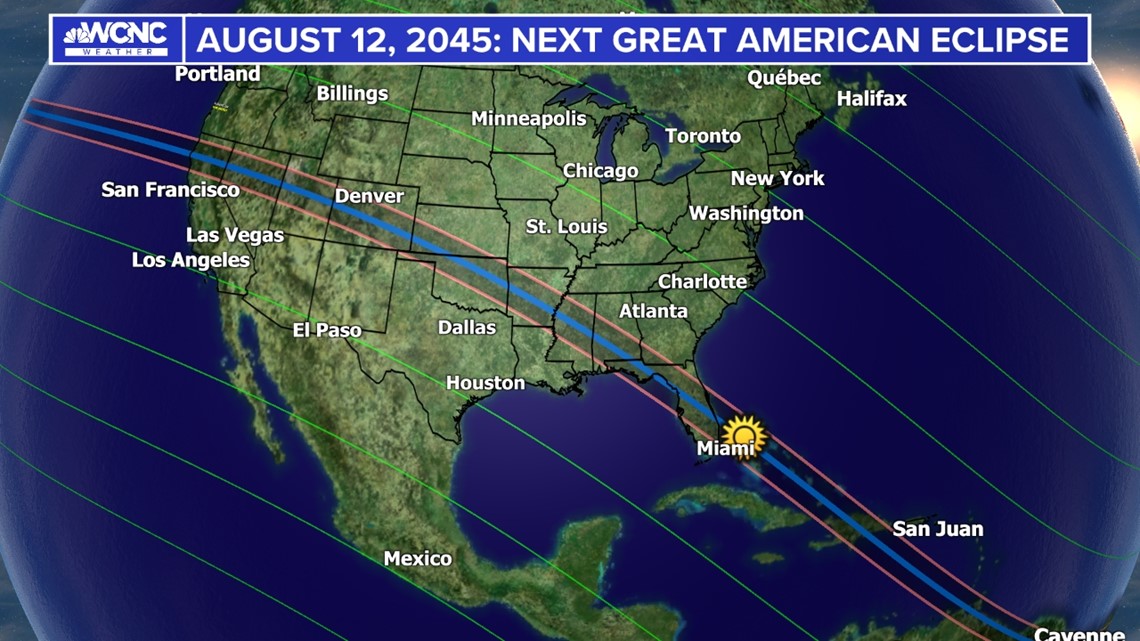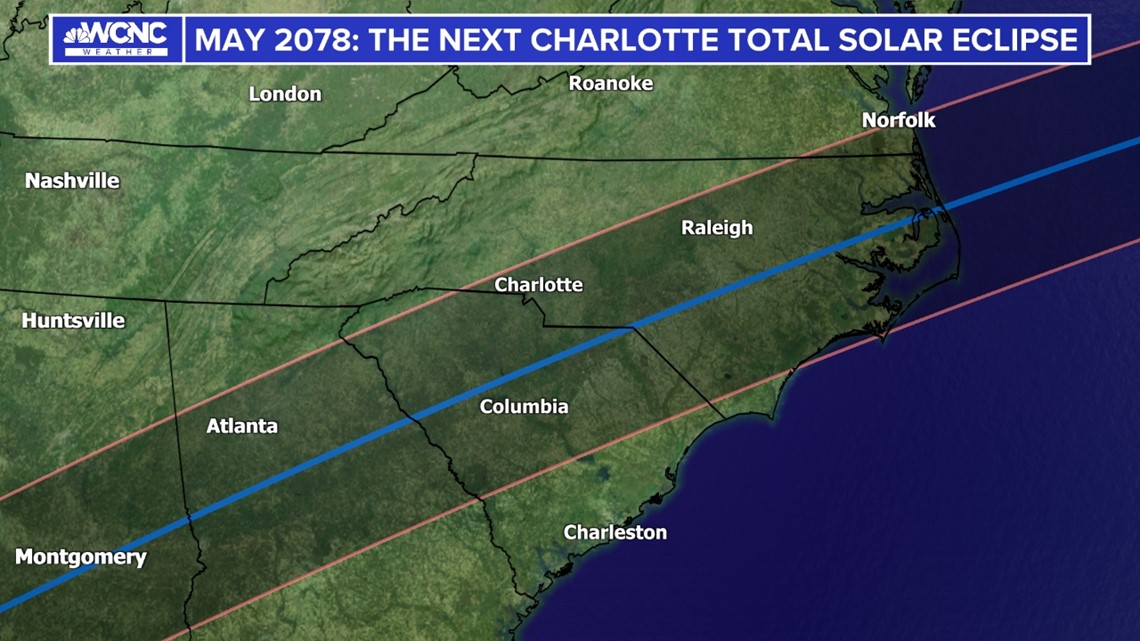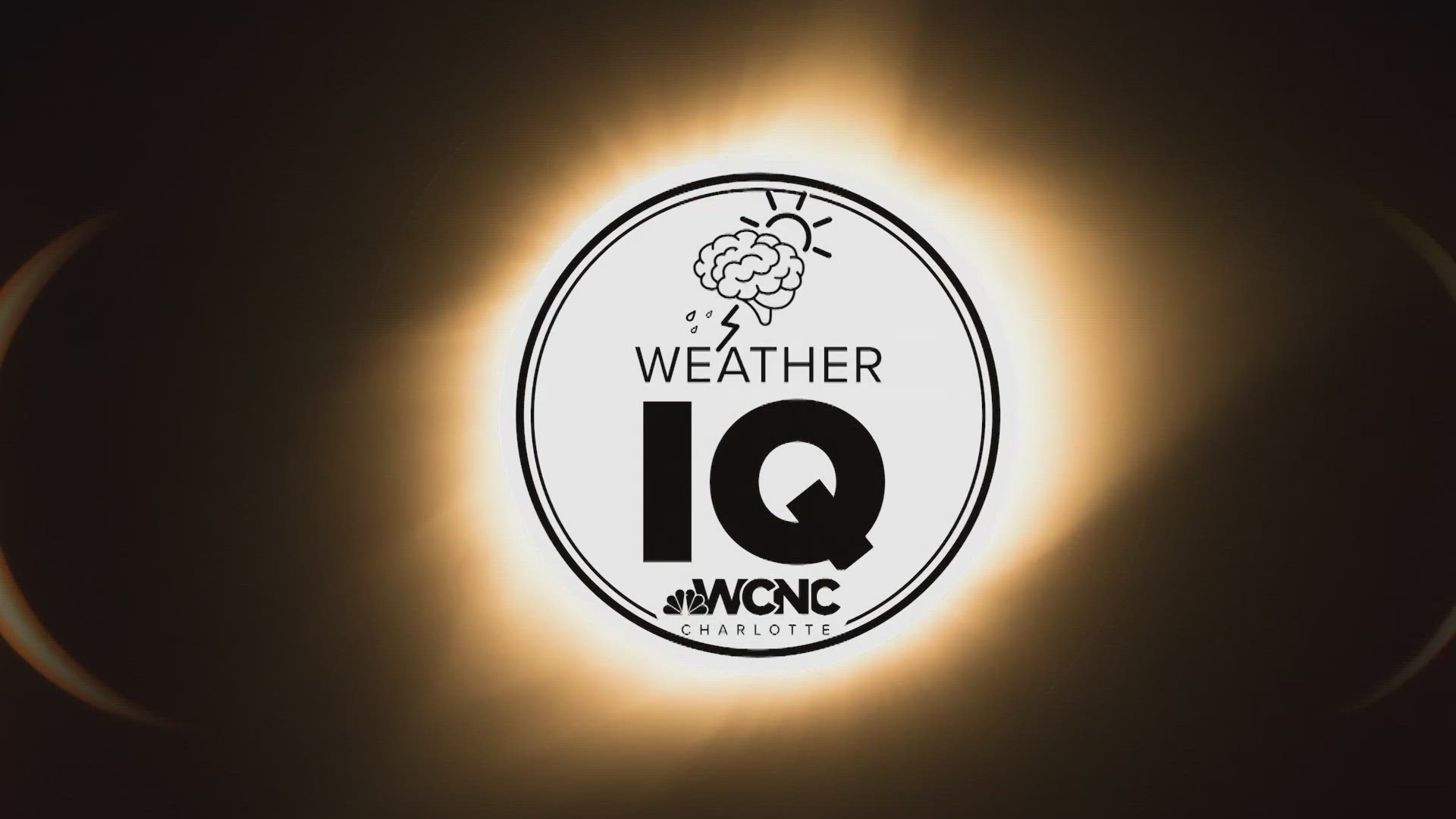KERRVILLE, Texas — A solar eclipse is visible somewhere in the world every year or two, but the April 8, 2024, total solar eclipse will span hundreds of miles across the U.S.. Let's learn why and how this happens in this Weather IQ: Eclipse Edition.
How an Eclipse Works:
A solar eclipse happens when the moon is directly in line between the Earth and Sun.
When this happens the moon casts a shadow, which has two parts. The umbra is the smallest and darkest part of the moon’s shadow, which perfectly covers the sun. This umbra is what creates the “Path of Totality” -- the 100 mile path where you can see a total eclipse.
Most of the shadow is the penumbra which isn’t as bright due to diffraction. This is what creates the partial eclipse that covers part of the sun. The coverage of the sun decreases the further you are away from the path of totality, where only a partial eclipse will be seen.


A total solar eclipse is considered a celestial phenomenon because the moon and sun are perceived to be the same size. This is because the sun is 400 times wider than the moon. And is 400 times farther away from earth than the sun. This math makes it look like a perfect match!
Totality typically averages around 3 minutes but the event can be over 7 minutes long.
It is only during totality that it is safe to look directly at the sun because the moon is completely blocking all of the sun’s harmful rays. The only thing left to see is the sun’s atmosphere known as the corona.
The 4 Types of Solar Eclipses:
- The partial eclipse is the most common accounting for 35.3% of all solar eclipses. These have no umbral path meaning, the sun is never completely covered.
- The most famous is the total eclipse (26.7%). The United States last saw one of these in 2017 and is lucky to see it again on April 8th 2024. The U.S. will not have another Great American Eclipse for another 21 years.
- The annular eclipse also known as the ring of fire eclipse is actually the second most common (33.2%) The U.S. saw one of these in October 2023. The "ring of fire" is technically a partial eclipse because some of the suns rays are still getting through.
- And a hybrid eclipse is the rarest where only 4.8% of all solar eclipses are hybrids. This eclipse shows a combination of both a total and an annular Eclipse on its path. The U.S. hasn't seen one of these since 1930 and won't see another one until 2164.
Upcoming American Solar Eclipses:
If you miss the April 2024 show, the next BIG Great American Eclipse will be August 12, 2045. This will range starting in Northern California and will exit southeast through Florida.


Carolina's turn: The next time the Carolinas and the Charlotte area will be in the 'path of totality will not be until May 2078. So if you plan on making this one, make sure to eat your veggies starting now.



